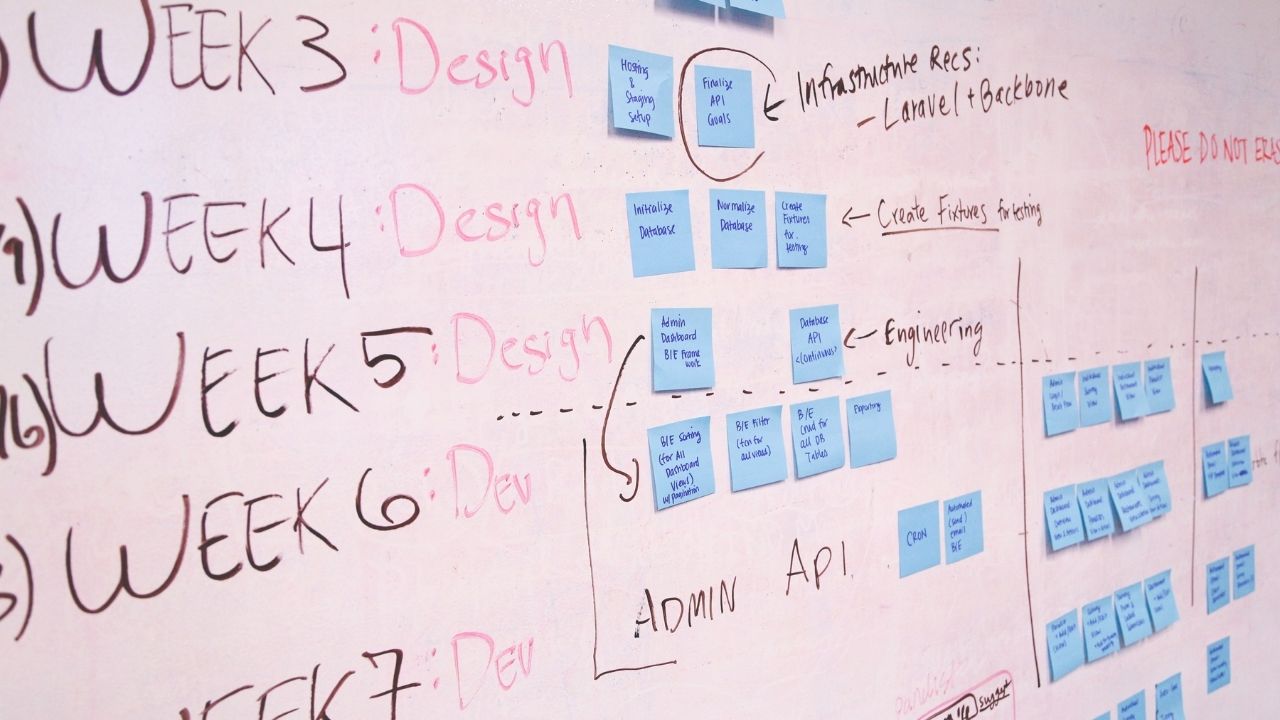Are you ready to take your client presentations to the next level? In this article, we'll show you how to present your web designs with confidence.
You'll learn the importance of understanding your client's goals and objectives, crafting a compelling design narrative, and showcasing the user experience and interface design. We'll also discuss presenting responsive design, cross-platform compatibility, accessibility, and usability features.
With these client presentation skills, you'll be able to effectively communicate your design choices and iterations, leaving your clients impressed and satisfied.
Key Takeaways
- Grasp the client's vision and tailor designs to meet their specific needs for better satisfaction
- Use storytelling techniques and visual elements to create an emotional connection with the audience
- Combine compelling visuals, storytelling techniques, and interactive elements to engage and leave a lasting impression
- Clearly communicate design choices, incorporate client feedback, and ensure designs meet the expectations of the target audience
Understanding the Client's Goals and Objectives
Understanding the client's goals and objectives is crucial for presenting your web designs with confidence. When you truly grasp what the client wants to achieve, you can tailor your designs to meet their specific needs, ultimately leading to better client satisfaction.
By taking the time to listen to the client and ask probing questions, you can gain valuable insights into their vision for the website. This understanding allows you to create designs that align perfectly with their goals, increasing the chances of a successful presentation.
Incorporating design feedback from the client is another essential aspect of understanding their goals and objectives. By actively seeking input and feedback throughout the design process, you can ensure that your final product meets their expectations. This collaborative approach not only improves the quality of the design but also fosters a sense of ownership and partnership with the client. By involving them in the process, you demonstrate your commitment to their satisfaction and build trust.
Crafting a Compelling Design Narrative
When it comes to crafting a compelling design narrative, storytelling plays a crucial role in engaging your audience. By using engaging visual narratives, you can effectively communicate your design ideas and concepts to others. With the right storytelling techniques, you can captivate your audience and convey your design effectively, leaving a lasting impression.

Storytelling for Design
Imagine you're presenting your web designs and you want to captivate your audience with compelling storytelling. One of the most important aspects of design storytelling is creating an emotional connection with your audience. By incorporating elements that evoke emotions, such as colors, imagery, and typography, you can create a more engaging and memorable experience for your viewers.
Design storytelling allows you to convey the message behind your web designs in a way that resonates with your audience on a deeper level. Whether it's using vibrant colors to evoke excitement or using soft tones to create a sense of calm, the key is to understand your audience and tailor your design storytelling accordingly.
Engaging Visual Narratives
To create engaging visual narratives, use a combination of compelling visuals, storytelling techniques, and interactive elements to immerse your audience in your web designs. Visual storytelling is a powerful tool that allows you to convey your message effectively and captivate your viewers. By incorporating visually appealing graphics, images, and videos, you can create a visually stimulating experience that leaves a lasting impression.
Additionally, storytelling techniques such as using a narrative structure, character development, and emotional storytelling can help you connect with your audience on a deeper level. To further enhance engagement, consider incorporating interactive presentations into your web designs. This can include interactive elements like animations, clickable buttons, and user-controlled navigation, allowing your audience to actively engage with your content.
Communicating Design Effectively
You can effectively communicate your design by clearly conveying your ideas and intentions through visual elements and concise explanations.
When presenting your design to clients or stakeholders, it is important to receive design feedback and incorporate it into your work. This feedback helps ensure that your design meets the expectations and needs of your audience. To effectively communicate your design, you can use various presentation techniques such as creating mood boards, wireframes, and mockups. These visual elements provide a clear representation of your design concept and allow stakeholders to visualize the final product.
Additionally, using concise explanations helps to articulate your design decisions and reasoning behind them.

Showcasing User Experience and Interface Design
We will explore the key points of effective UX strategies, engaging interface designs, and user-centered design principles. By implementing these strategies, you can create a seamless and enjoyable user experience that will keep your audience engaged and satisfied.
With a user-centered approach, you can ensure that your designs are intuitive, visually appealing, and cater to the needs and preferences of your target users.
Effective UX Strategies
When presenting your web designs, it's important to incorporate effective UX strategies to enhance user experience. To ensure your designs are user-friendly and visually appealing, consider implementing responsive design techniques. This means designing websites that adapt to different screen sizes and devices, providing a seamless experience for users across platforms. By prioritizing responsive design, you can guarantee that your designs are accessible and functional for all users.
Additionally, user testing is crucial in the UX design process. By conducting user tests, you can gather valuable feedback and insights on how users interact with your designs. This information allows you to make informed decisions and iterate on your designs to create the best possible user experience.
Don't underestimate the power of incorporating responsive design techniques and user testing when presenting your web designs.
Engaging Interface Designs
Now that you've mastered effective UX strategies, let's move on to the next step in presenting your web designs with confidence: creating engaging interface designs. One of the key aspects of an engaging interface design is the use of interactive elements. These elements, such as buttons, sliders, and scroll effects, provide an interactive and immersive experience for your clients. They allow users to actively engage with the design and make it more memorable.
Another important element to consider is visual hierarchy. By strategically arranging elements and using color, size, and contrast, you can guide your client's attention to the most important parts of the design. This ensures that they understand the key messages and functionalities of the website or app.

User-Centered Design Principles
By incorporating user-centered design principles, you can create interface designs that prioritize the needs and preferences of your target audience. Design thinking and user research are key components of this process. Design thinking involves understanding the problem, exploring possible solutions, and iterating on those solutions based on user feedback.
User research helps you gain insights into your target audience, their behaviors, and their preferences. By conducting user research, you can gather valuable data and feedback that will inform your design decisions. This approach ensures that your interface designs are not only visually appealing but also functional and intuitive for your users.
Presenting Responsive Design and Cross-Platform Compatibility
Presenting responsive design and cross-platform compatibility is essential for showcasing your web designs with confidence. When it comes to web design, it's crucial to ensure that your designs are not only visually appealing but also functional across different devices and platforms. Responsive design techniques allow your website to adapt and respond to different screen sizes and resolutions, providing a seamless user experience. By implementing these techniques, you can ensure that your web designs look great on desktops, tablets, and smartphones alike.
Cross-platform optimization is another important aspect of presenting your web designs with confidence. With the wide variety of devices and operating systems available today, it's essential to ensure that your website functions well across all platforms. This means testing your designs on different browsers, such as Chrome, Firefox, and Safari, as well as on different operating systems like Windows, macOS, iOS, and Android.
Highlighting Accessibility and Usability Features
Ensuring accessibility and usability features are incorporated into your designs is essential for creating a user-friendly experience. When it comes to accessible design, it's crucial to consider the needs of all users, including those with disabilities or impairments. By implementing features such as alt-text for images, keyboard navigation, and adjustable text sizes, you can make your website more inclusive and accessible to a wider audience.
Usability testing is another vital aspect of designing for accessibility and user-friendliness. By conducting usability tests, you can gather valuable feedback and insights from real users. This feedback allows you to identify any potential issues or barriers that may hinder user experience. Through usability testing, you can refine and improve your designs, ensuring that they are intuitive and easy to navigate.
Incorporating accessibility and usability features not only benefits users but also enhances your website's overall performance. By making your designs accessible, you are demonstrating a commitment to inclusivity and equality. Moreover, an accessible and user-friendly website can lead to increased user satisfaction, improved conversion rates, and higher engagement levels.

Effectively Communicating Design Choices and Iterations
When explaining design choices and iterations, it's important to clearly communicate the rationale behind your decisions. This helps your clients understand the thought process behind your designs and builds trust in your expertise. When presenting your web designs, take the time to explain why you made certain choices, such as color schemes, typography, and layout. By explaining the design rationale, you can help your clients see the value and purpose of each element.
In addition to explaining the design choices, it's crucial to actively seek and receive client feedback. This not only demonstrates your willingness to collaborate but also ensures that the final product meets their expectations. Encourage your clients to provide feedback and be open to their suggestions. This will help you iterate and refine your designs to better align with their vision.
When receiving client feedback, remember to stay open-minded and avoid getting defensive. Instead of dismissing their suggestions, try to understand their perspective and find ways to incorporate their ideas while keeping the overall design goals intact. Effective communication and collaboration with clients throughout the design process will lead to a successful and satisfying end result.
Frequently Asked Questions
How Can I Ensure That My Web Design Aligns With the Client's Goals and Objectives?
To ensure your web design aligns with the client's goals and objectives, actively seek client feedback throughout the design process. Use alignment strategies, like regular check-ins and clear communication, to make necessary adjustments and deliver a design that meets their needs.
What Elements Should Be Included in a Compelling Design Narrative to Engage the Client?
To engage the client, include elements of compelling storytelling and visual storytelling in your design narrative. This will captivate their attention and make your web designs more impactful and memorable.
How Can I Effectively Showcase the User Experience and Interface Design of My Web Designs?
To effectively showcase the user experience and interface design of your web designs, focus on demonstrating their effectiveness and presenting their aesthetics. Highlight key features and explain how they enhance the overall user experience.
What Strategies Can I Use to Effectively Present Responsive Design and Cross-Platform Compatibility to Clients?
To effectively present responsive design to clients, use strategies like showcasing before-and-after examples, explaining the benefits of adaptability, and using visual aids. When presenting cross-platform compatibility, focus on demonstrating seamless functionality and highlighting the user experience.

How Can I Highlight the Accessibility and Usability Features of My Web Designs to Clients?
To highlight the accessibility features and showcase the usability benefits of your web designs to clients, you can use clear and concise language, provide visual demonstrations, and explain how these features enhance the overall user experience.
Conclusion
So there you have it! By understanding the client's goals and objectives, crafting a compelling design narrative, showcasing user experience and interface design, presenting responsive design and cross-platform compatibility, highlighting accessibility and usability features, and effectively communicating design choices and iterations, you can present your web designs with confidence.
Remember to be confident in your work and passion for design, and your clients will be impressed with your presentation skills. Good luck and happy designing!

